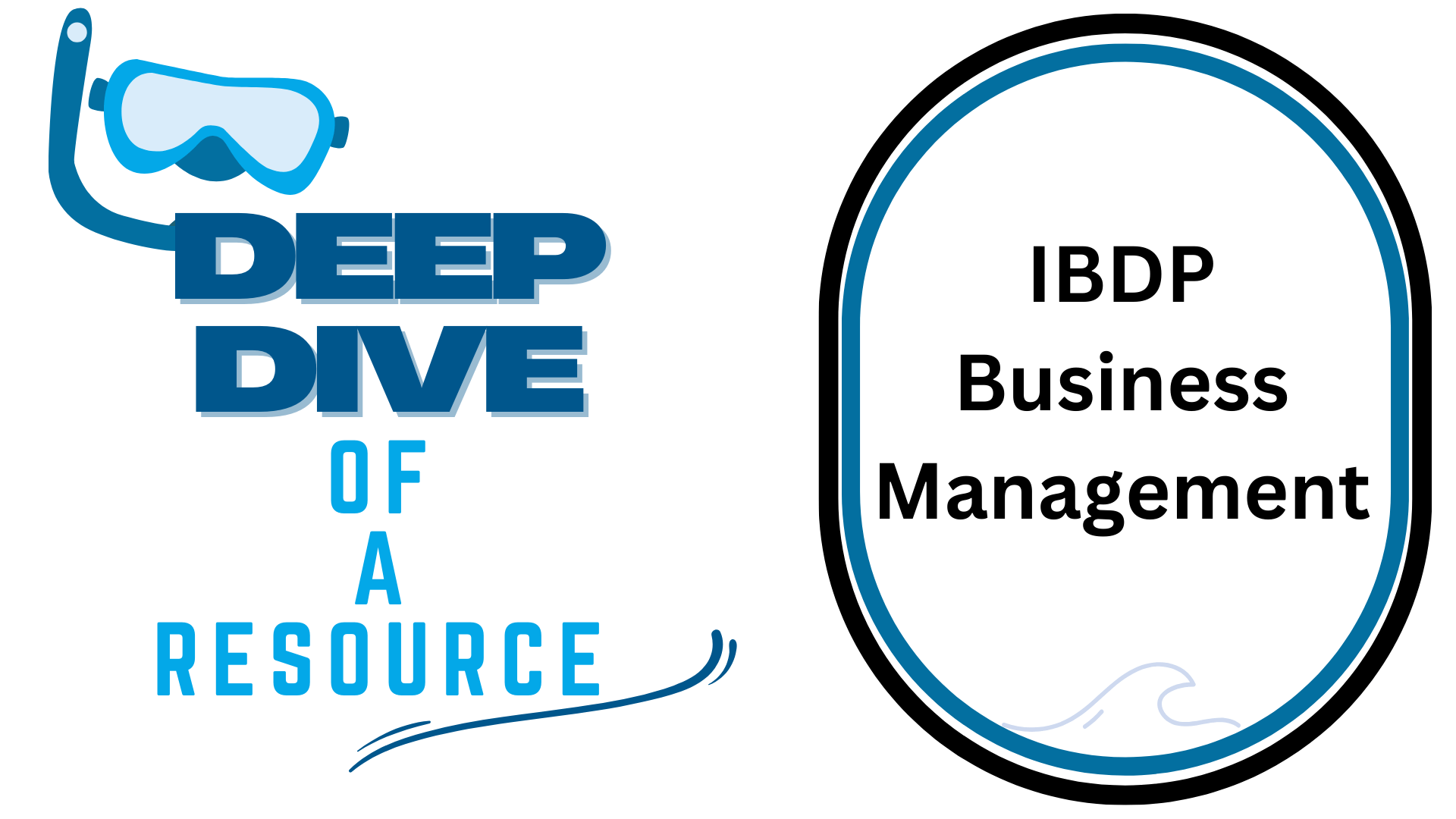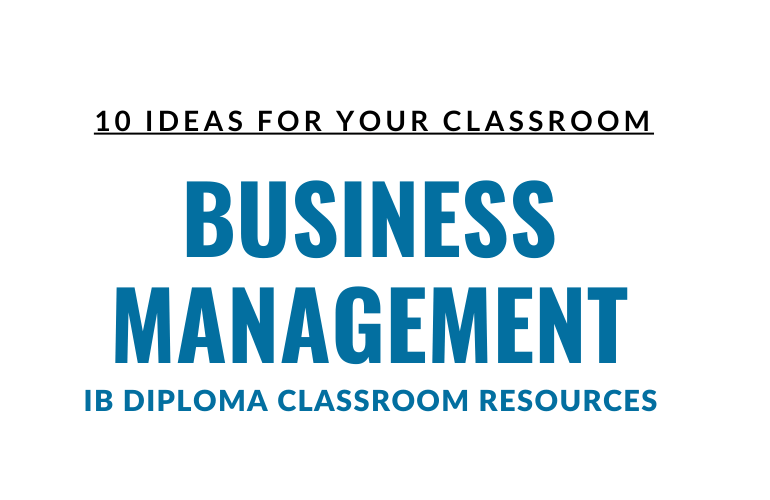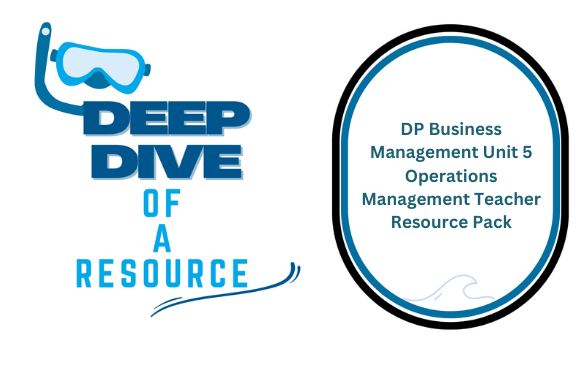Table of Contents
Introduction
This deep dive into Business Management for the IB Diploma Programme (ISBN: 9781921917820) provides an analytical exploration of how this resource aids IB educators and students. The book serves as a crucial guide for teaching and learning business concepts, offering structured insights into corporate ethics, financial management, human resource management, and marketing strategies. This analysis highlights specific examples and examines how these elements enhance understanding and application of business principles.
1. Corporate Social Responsibility (CSR) – Pages 47-48
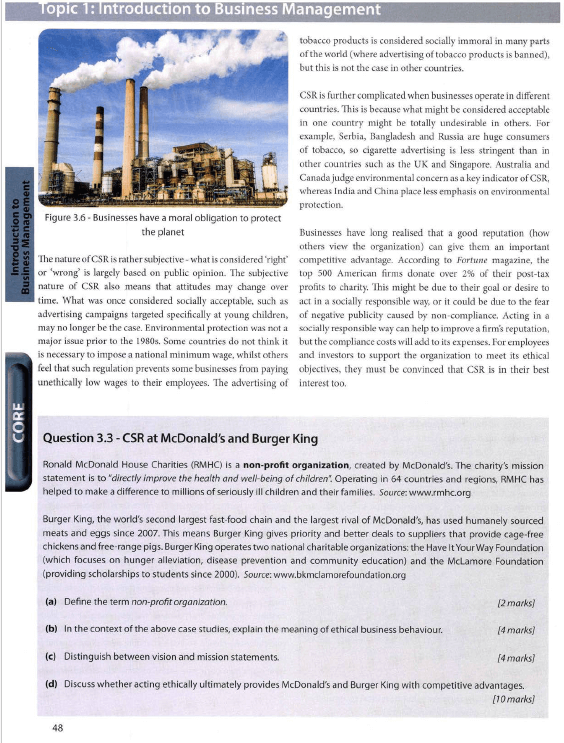
How It Supports Educators:
- The book introduces CSR as a conscientious consideration of ethical and environmental practices in business. Educators can use real-world examples, such as McDonald’s litter patrols and Lenovo’s pre-tax income donations, to explain the practical implications of CSR.
- Discussion points like how multinational companies adjust CSR strategies across different countriesencourage critical thinking among students.
- The Fortune 500 case study, where American firms donate over 2% of post-tax profits to charity, provides statistical evidence that teachers can use to illustrate the financial impact of CSR.
How It Benefits Students:
- The section raises Theory of Knowledge (TOK) questions on the ethical obligations of businesses.
- Encourages analysis of real-world CSR dilemmas, such as ethical challenges in tobacco advertising in different markets.
- Provides practice in evaluating business decisions based on ethical principles.
2. Business Ethics and Ethical Objectives – Pages 43-44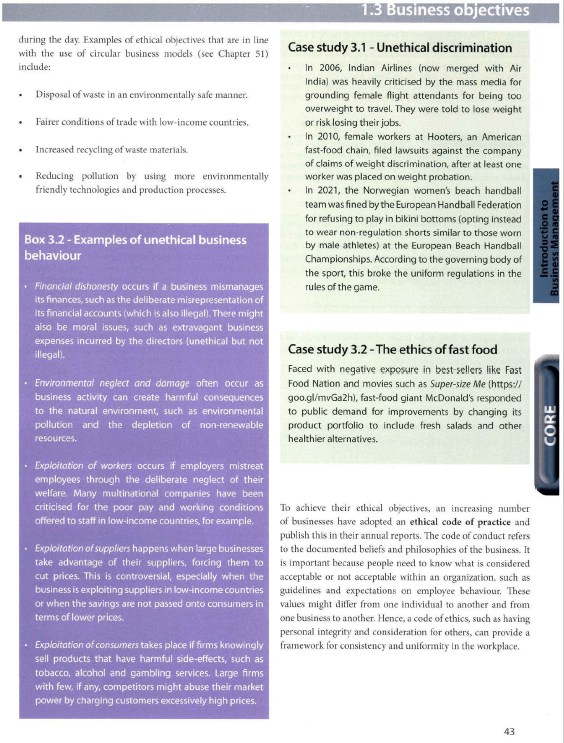
How It Supports Educators:
- The Business Management for the IB Diploma Programme (ISBN: 9781921917820) defines ethics as moral principles that guide business decision-making and provides case studies, such as Hooters’ weight discrimination lawsuits and the Norwegian women’s beach handball team uniform controversy.
- Educators can facilitate class debates on the role of ethics in profitability and corporate reputation.
- Key concepts and review questions help in structuring lesson objectives and assessments.
How It Benefits Students:
- Provides case study-based learning, enabling students to examine ethical dilemmas and develop reasoned arguments.
- Introduces concepts such as stakeholder conflicts and exploitation of workers and consumers, which align with the IB learner profile’s ethical responsibility framework.
- Helps students understand how legislation influences business ethics and the consequences of unethical practices.
3. Financial Management – Pages 273-299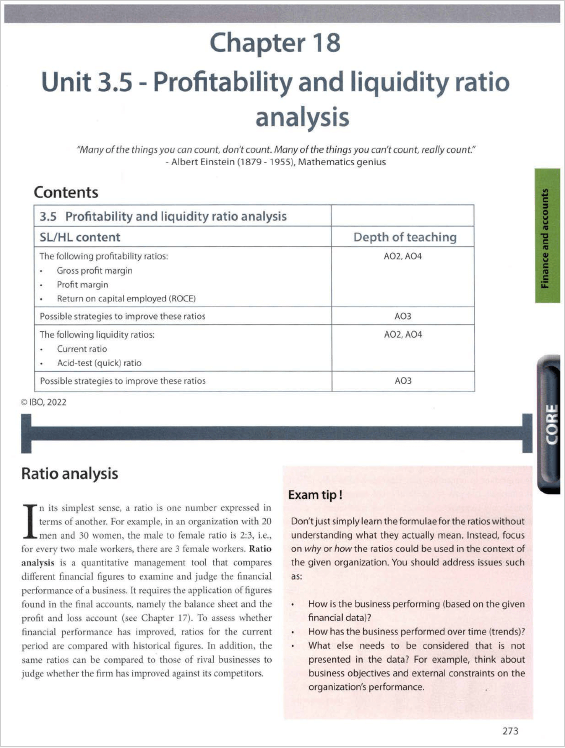
How It Supports Educators:
- The section on debt/equity ratio analysis (HL only) helps educators introduce financial risk assessment.
- Provides practical exercises on cash flow forecasting for students to apply theoretical knowledge.
- The inclusion of real-world corporate investment strategies supports deeper analysis of financial decision-making.
How It Benefits Students:
- Offers quantitative financial analysis practice, crucial for IB exam preparation.
- Enhances problem-solving skills by presenting financial challenges faced by businesses.
- Encourages critical thinking on budgeting and cash flow management.
4. Human Resource Management – Pages 95-143
How It Supports Educators:
- The book outlines key HR topics such as leadership styles, organizational structures, and motivation theories.
- Case studies of workplace conflicts provide discussion material for leadership and management lessons.
- The section on corporate culture (HL only) helps educators highlight the impact of company values on employee performance.
How It Benefits Students:
- Equips students with knowledge of management theories such as Maslow’s hierarchy of needs and Herzberg’s two-factor theory.
- Helps students evaluate real-world HR issues in multinational corporations.
- Encourages critical analysis of how motivation impacts employee productivity and business success.
5. Marketing Strategies – Pages 341-465
How It Supports Educators:
- Provides a detailed breakdown of the 7Ps of the marketing mix (Product, Price, Promotion, Place, People, Process, Physical Evidence).
- Explores international marketing strategies, allowing educators to integrate global business perspectives.
- Examines market research techniques, giving teachers a basis for practical classroom activities.
How It Benefits Students:
- Enables them to analyze and create marketing strategies based on real-world business scenarios.
- Helps students develop an understanding of consumer behavior and competitive positioning.
- Encourages application of market segmentation, branding, and promotional tactics in case study analysis.
Conclusion
This deep dive into Business Management for the IB Diploma Programme (ISBN: 9781921917820) illustrates its immense value for IB educators and students. Through structured lessons, case studies, and critical thinking exercises, the book strengthens students’ understanding of business principles and real-world applications. Educators can leverage its content to foster engaging discussions, enhance conceptual clarity, and prepare students for success in IB assessments and future business careers. For more IB Business Management resources, visit www.myibsource.com
IB Business Management 5th Edition

$109.00
Paul Hoang's fifth edition textbook for the IB Diploma Programme in Business Management is a comprehensive resource designed to support students and teachers in mastering the updated course requirements (first exams 2024). This critically acclaimed guide provides thorough and engaging… read more

